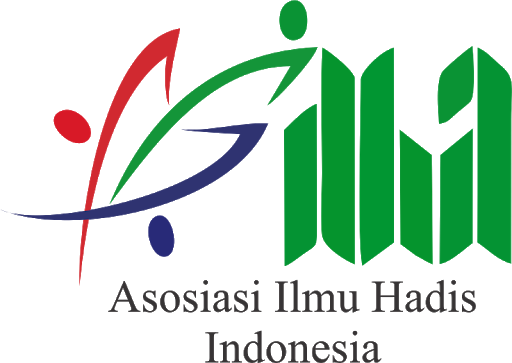Muballigh Online Reception of Hadith Tasyabbuh and Intention (Controversion of Wishing Merry Christmas)
Penerimaan Mubaligh Online atas Hadis Tasyabbuh dan Niat (Kontroversi Mengucapkan Selamat Natal)
DOI:
https://doi.org/10.14421/livinghadis.2023.4438Keywords:
Buya ar Razzy; Moderation; Hadith Reception; Hadith of Intention; Hadith of TasyabbuhAbstract
The law of wishing Merry Christmas by Muslims is always debated and can be an indicator to determine the level of religious moderation. There are at least three groups in the legal debate wishing Merry Christmas, namely groups that allow, prohibit, and situational. One of the figures that has attracted public attention regarding the law of wishing Merry Christmas is Dr. Buya Ar Razzy through Deddy Corbuzier’s YouTube podcast. By applying Stuart Hall’s reception theory, this study found that the reception of hadith tasyabbuh and intentions in the podcast are included in the negotiation category. This welcoming pattern is proof that ar Razzy is trying to spread a moderate mindset. This moderation has implications for the creation of cyber Muslims who are wiser in responding to differences. This is reflected in the digital response in the podcast comments. In addition, the emergence of many video clips on YouTube Shorts with positive narratives is another proof that more and more parties agree with the moderate opinion and mission presented by ar Razzy.
 Abstract viewed: 438 times
|
Abstract viewed: 438 times
|
 pdf downloaded = 482 times
pdf downloaded = 482 times
References
Abdel-Fadil, Mona. 2011. “The Islam-Online Crisis: A Battle of Wasatiyya vs. Salafi Ideologies?” CyberOrient 5 (1): 4–36. https://doi.org/10.1002/J.CYO2.20110501.0001.
Ahyar, Muzayyin, and Alfitri. 2019. “Aksi Bela Islam: Islamic Clicktivism and the New Authority of Religious Propaganda in the Millennial Age Indonesia.” Indonesian Journal of Islam and Muslim Societies 9 (1): 1–29. https://doi.org/10.18326/IJIMS.V9I1.
Akmaliah, Wahyudi. 2020. “The Demise of Moderate Islam: New Media, Contestation, and Reclaiming Religious Authorities.” Indonesian Journal of Islam and Muslim Societies 10 (1): 1–24. https://doi.org/10.18326/ijims.v10i1.1-24.
“Biografi Buya Arrazy Hasyim, Ustadz Pendiri Ribath Nouraniyah.” n.d. Accessed March 18, 2023. https://www.viva.co.id/gaya-hidup/inspirasi-unik/1431495-biografi-buya-arrazy-hasyim-ustadz-pendiri-ribath-nouraniyah.
Campbell, Heidi. 2007. “Who’s Got the Power? Religious Authority and the Internet.” Journal of Computer-Mediated Communication 12 (3): 1043–62. https://doi.org/10.1111/J.1083-6101.2007.00362.X.
Campbell, Heidi A. 2012. “Understanding the Relationship between Religion Online and Offline in a Networked Society.” Journal of the American Academy of Religion 80 (1): 64–93. https://doi.org/10.1093/JAAREL/LFR074.
Hall, Stuart. 2003. “Encoding/Decoding ∗.” Culture, Media, Language, September, 117–27. https://doi.org/10.4324/9780203381182-13.
Haramain, Muhammad, Abu Bakar Juddah, and Ahmad Sutra Rustan. 2020. “Contestation of Islamic Radicalism in Online Media: A Study with Foucault’s Theory on Power Relation.” International Journal of Advanced Science and Technology 29 (7): 34–44.
Iser, Wolfgang. 2000. “Do I Write for an Audience?” PMLA 115 (3): 310–14. https://doi.org/10.2307/463451.
LAMBEK, MICHAEL. 1990. “Certain Knowledge, Contestable Authority: Power and Practice on the Islamic Periphery.” American Ethnologist 17 (1): 23–40. https://doi.org/10.1525/AE.1990.17.1.02A00020.
Lawrence, Bruce B. 2005. “Islam in the Digital Age: E-Jihad, Online Fatwas and Cyber Islamic Environments, by Gary R. Bunt. London: Pluto Press, 2003. 237 Pages, Index, Glossary, Bibliography. US$24.95 (Paper) ISBN 0-7453-2098-8.” Review of Middle East Studies 39 (1): 113–15. https://doi.org/10.1017/S0026318400047805.
Neumann, Peter R. 2013. “Options and Strategies for Countering Online Radicalization in the United States.” Http://Dx.Doi.Org/10.1080/1057610X.2013.784568 36 (6): 431–59. https://doi.org/10.1080/1057610X.2013.784568.
Nizam Zulkipli, Shahril, Ishak Suliaman, and Norazmi Anas. 2021. “An Introduction to The Application of Reception (Tahammul) of Hadith in the Digital Hadith Data Development Process.” https://doi.org/10.6007/IJARBSS/v11-i8/10791.
Pillai, Poonam. 1992. “Rereading Stuart Hall’s Encoding/Decoding Model.” Communication Theory 2 (3): 221–33. https://doi.org/10.1111/J.1468-2885.1992.TB00040.X.
Pomalingo, Samsi, Nurul Ilmi Idrus, Mohammad Basir, and Mashadi. 2021. “Literacy of Islamic Thought: Contestation, Claim of Truth, and Polemic of Religion in Islam in Gorontalo, Indonesia.” International Journal of Cultural and Religious Studies 1 (1): 58–65. https://doi.org/10.32996/IJCRS.2021.1.1.8.
Qudsy, Saifuddin Zuhri, Muhammad Rosyid Awwabin, and Ahmad Sholahuddin. 2020. “Temboro Tablighi Jamaatâ€TMs Reception to Hadith on Covid-19.” DINIKA : Academic Journal of Islamic Studies 5 (2): 191–212. https://doi.org/10.22515/DINIKA.V5I2.2623.
Rane, Halim. 2022. “Interfaith Actor Reception of Islamic Covenants: How ‘New’ Religious Knowledge Influences Views on Interreligious Relations in Islam.” Religions 2022, Vol. 13, Page 873 13 (9): 873. https://doi.org/10.3390/REL13090873.
Reflektif, Perspektif Sosiologi, Subkhani Kusuma, Dewi Uin, and Sunan Kalijaga. 2017. “Fungsi Performatif Dan Informatif Living Hadis Dalam Perspektif Sosiologi Reflektif.” Jurnal Living Hadis 2 (2): 179–207. https://doi.org/10.14421/LIVINGHADIS.2017.1328.
Santoso, Rahmania, and Desi Dwi Prianti. 2022. “Da’wah in Household Product Advertisements: A Reception Study of Islamic Values in Nawaitu Sahaja TV Advertisements” 34 (1). https://doi.org/10.22146/jh.69678.
Scholz, Jan, Tobias Selge, Max Stille, and Johannes Zimmermann. 2008. “Listening Communities? Some Remarks on the Construction of Religious Authority in Islamic Podcasts.” Die Welt Des Islams 48 (3): 457–509. https://doi.org/10.1163/157006008X364721.
Shaw, Adrienne. 2017. “Encoding and Decoding Affordances: Stuart Hall and Interactive Media Technologies.” Http://Dx.Doi.Org/10.1177/0163443717692741 39 (4): 592–602. https://doi.org/10.1177/0163443717692741.
Solahudin, Dindin, and Moch Fakhruroji. 2019. “Internet and Islamic Learning Practices in Indonesia: Social Media, Religious Populism, and Religious Authority.” Religions 2020, Vol. 11, Page 19 11 (1): 19. https://doi.org/10.3390/REL11010019.
Syahidil Mubarik. 2021. “Resepsi Hadis Dalam Film Pendek ‘Kaya Tapi Missqueen’ Channel Youtube Islamidotco (Kajian Living Hadis).” Jurnal Studi Hadis Nusantara 3 (2): 153–62. https://doi.org/10.24235/JSHN.V3I2.9702.
Whyte, Shaheen Amid. 2022. “Islamic Religious Authority in Cyberspace: A Qualitative Study of Muslim Religious Actors in Australia.” Religions 2022, Vol. 13, Page 69 13 (1): 69. https://doi.org/10.3390/REL13010069.
Qudsy, Saifuddin Zuhri. 2016. “LIVING HADIS: GENEALOGI, TEORI, DAN APLIKASI.” Jurnal Living Hadis 1 (1): 177–96. https://doi.org/10.14421/LIVINGHADIS.2016.1073.
Downloads
Published
Issue
Section
License
Copyright (c) 2023 Safri Nur Jannah, Moh. Isbat Alfan Ghoffari

This work is licensed under a Creative Commons Attribution-ShareAlike 4.0 International License.
- Authors who publish with this journal agree to the following terms:
- Authors retain copyright and grant the journal right of first publication with the work simultaneously licensed under a Creative Commons Attribution License that allows others to share the work with an acknowledgement of the work's authorship and initial publication in this journal.
- Authors are able to enter into separate, additional contractual arrangements for the non-exclusive distribution of the journal's published version of the work (e.g., post it to an institutional repository or publish it in a book), with an acknowledgement of its initial publication in this journal.
- Authors are permitted and encouraged to post their work online (e.g., in institutional repositories or on their website) prior to and during the submission process, as it can lead to productive exchanges, as well as earlier and greater citation of published work.
















